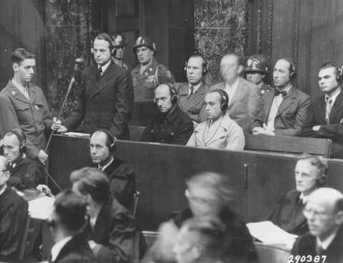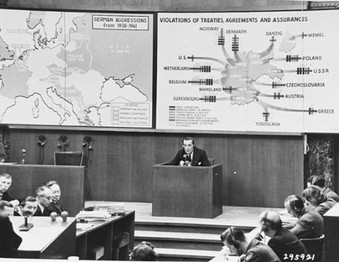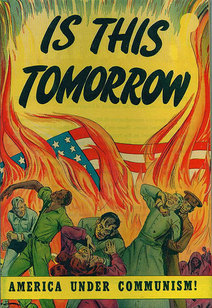|
Timeline of the trials in the Subsequent Nuremberg Proceedings
(click on a timespan to see the name of each trial) |
Continuing Justice in NurembergA series of 12 follow-up trials from late 1946 to 1949 tried other members of the Nazi Leadership. The USSR, Britain, and France withdrew to focus on rebuilding, so the trials were entirely American. |
The Doctors' Trial
|
The most famous subsequent trial dealt with doctors who violated human rights by utilizing concentration camps to obtain human test subjects. It resulted in the Nuremberg Code, which outlines the rights of human test subjects and is still in use today. |
Full text of the Nuremberg Code
|
|
US Anti-Soviet Propaganda
(McGraw Hill) |
Effectiveness & ChallengesOther than the Doctors' Trial, subsequent proceedings did not have their full potential effect as the Allied powers neglected their responsibility to carry the Nuremberg Proceedings to completion and fulfill their promise of dedication to justice. They instead focused on the Cold War and domestic issues.
"In the early 50s, most of those convicted in the follow-up trials were released without serving the full prison term, because the Allies needed them. They need them to rebuild the country, and that at some point, you need doctors, you need Army sergeants, you need police officers, to build up Germany as a front state of the Cold War." - Historian Ingo Eigen |


